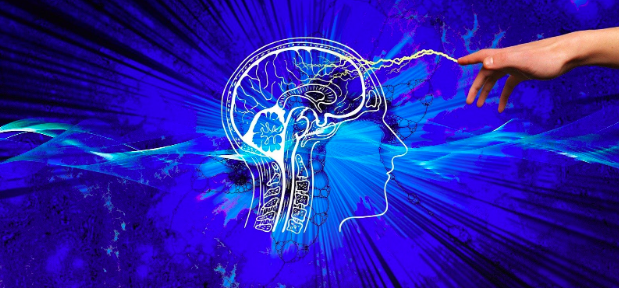We all know that the brain grows and changes rapidly during early childhood, but it was only in the past decade that researchers appreciated that these changes can continue throughout adulthood. The changing, or “rewiring,” of the brain is known as neuroplasticity. Neuroplasticity is a complicated topic that scientists are still beginning to understand, but a simple definition is when the neurons in the brain alter their pathways and connections in response to something that you experience.(1)
The brains of people recovering from traumatic head injuries, for instance, regularly alter to make up for functions lost in the injury. Past studies, meanwhile, have found less extreme changes, like a region of the brain important to memory growing larger in city cab drivers. (2) Learning a foreign language positively affects neurons,(3) as does meditation.(4)
The big question, then, is if we can rewire our brains to enhance our lives. Books and news pieces promising to help you rewire your brain are everywhere, but the truth is that neuroplasticity isn’t an overnight development.(1) Some of these claims may be overstated. While we seem to be able to rewire our brains, exactly how to accomplish this in order to have a meaningful mental impact isn’t yet fully understood. Plus, research on the brain is constantly changing. Something that we thought was true about the brain often turns out to be untrue, and vice versa. Recent studies are even showing that the previously seen benefit of mind games and puzzles to prevent conditions like Alzheimer’s disease may not actually have any effect, after all. (5)
So, under current research, how can you change your brain for the better? One of the best ways may be through common mental health treatments.
How Cognitive Behavioral and Trauma Therapies Change the Brain
Cognitive behavioral therapy was developed decades ago, but this style of talk therapy has consistently shown powerful effects within the brain. For people with conditions like obsessive-compulsive disorder (a top treatment choice), schizophrenia, panic disorder, and trauma, CBT can help relieve debilitating symptoms. CBT teaches you to change your way of thinking. A 2017 study (6) found that cognitive behavioral therapy strengthens certain connections in the brains of people experiencing psychosis, relieving their symptoms even eight years later.
Cognitive behavioral therapy is highly recommended for post-traumatic stress disorder.(7) Trauma-focused CBT can help people process difficult emotions and experiences. Another treatment, EMDR, may also play a role in changing the brain for the better for people who have experienced trauma.(8) The fight-or-flight (adrenaline) response involved during trauma makes memories “stick” fiercely in the brain. EMDR is a kind of memory processing treatment that also helps individuals process past events.
A trained therapist should always be the one to administer CBT or EMDR.
Treatment Services for Neuropsychological Conditions
Located in Columbia, Neurobehavioral Associates offers neuropsychologically informed strategic therapy (NIST). We use cognitive behavioral therapy techniques and targeted therapies to treat children and families affected by autism spectrum disorder, ADHD, and executive function difficulties. We also provide resources and coaching for parents. Dr. Culotta, Ph.D, ABN, is co-author of the book, School Success for Kids with Emotional and Behavioral Disorders.
Contact our experienced team today for more information on our treatment services or to schedule a comprehensive assessment and evaluation.
References:
- Stix, G. (2014, July 14). New Clues to Just How Much the Adult Brain Can Change. Retrieved March 8, 2020, from https://blogs.scientificamerican.com/talking-back/new-clues-to-just-how-much-the-adult-brain-can-change/
- Jabr, F. (2011, December 8). Cache Cab: Taxi Drivers’ Brains Grow to Navigate London’s Streets. Retrieved March 8, 2020, from https://www.scientificamerican.com/article/london-taxi-memory/
- Paddock, C. (2016, September 5). Language learning boosts brain plasticity and ability to code new information. Retrieved March 8, 2020, from https://www.medicalnewstoday.com/articles/312708
- Davidson, R. J., & Lutz, A. (2008, January 1). Buddha’s Brain: Neuroplasticity and Meditation. Retrieved March 8, 2020, from https://www.ncbi.nlm.nih.gov/pmc/articles/PMC2944261/
- Kolirin, L. (2018, December 20). Crosswords and puzzles don’t prevent mental decline, study says. Retrieved March 8, 2020, from https://www.cnn.com/2018/12/11/health/puzzles-sudoku-mental-decline-study-scli-intl/index.html
- Talking therapy changes the brain’s wiring, study reveals for first time. (2017, January 17). Retrieved March 8, 2020, from https://www.sciencedaily.com/releases/2017/01/170117101436.htm
- Treatment Guidelines: Cognitive Behavioral Therapy. (n.d.). Retrieved March 8, 2020, from https://www.apa.org/ptsd-guideline/treatments/cognitive-behavioral-therapy
- Reyes, Z. (2020, January 14). The Roles Neuroplasticity and EMDR Play in Healing from Childhood Trauma. Retrieved March 8, 2020, from https://psychcentral.com/lib/the-roles-neuroplasticity-and-emdr-play-in-healing-from-childhood-trauma/






